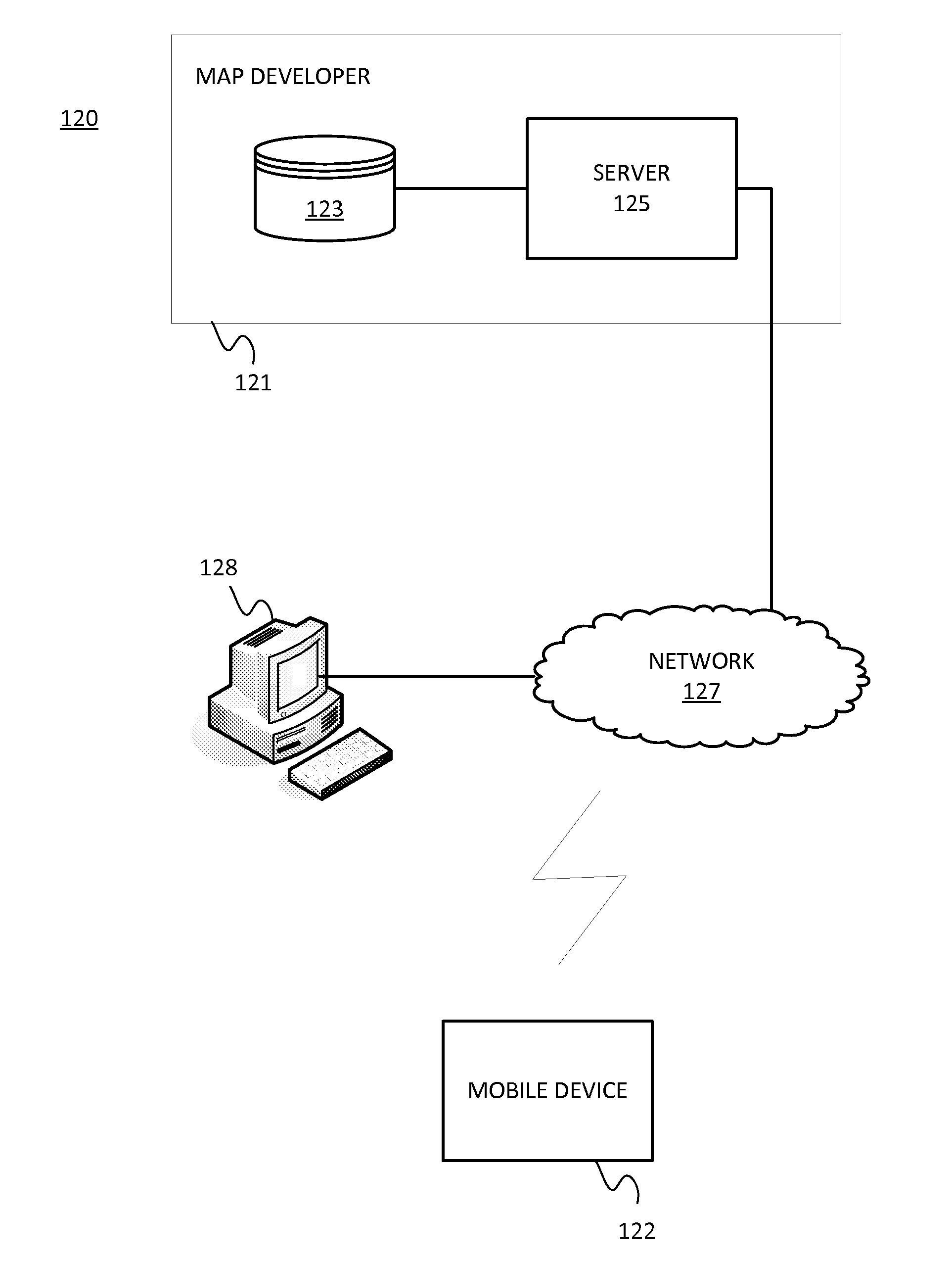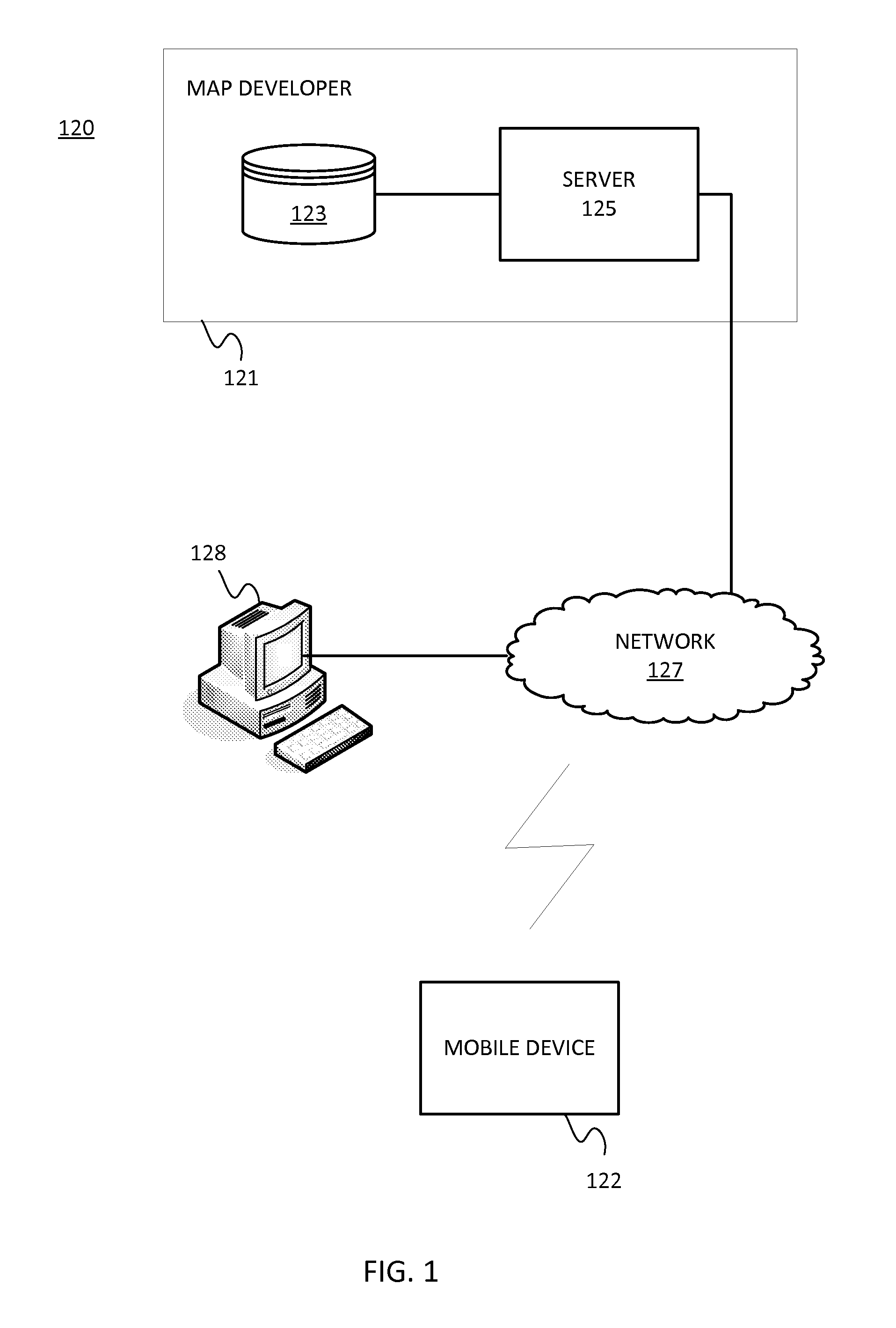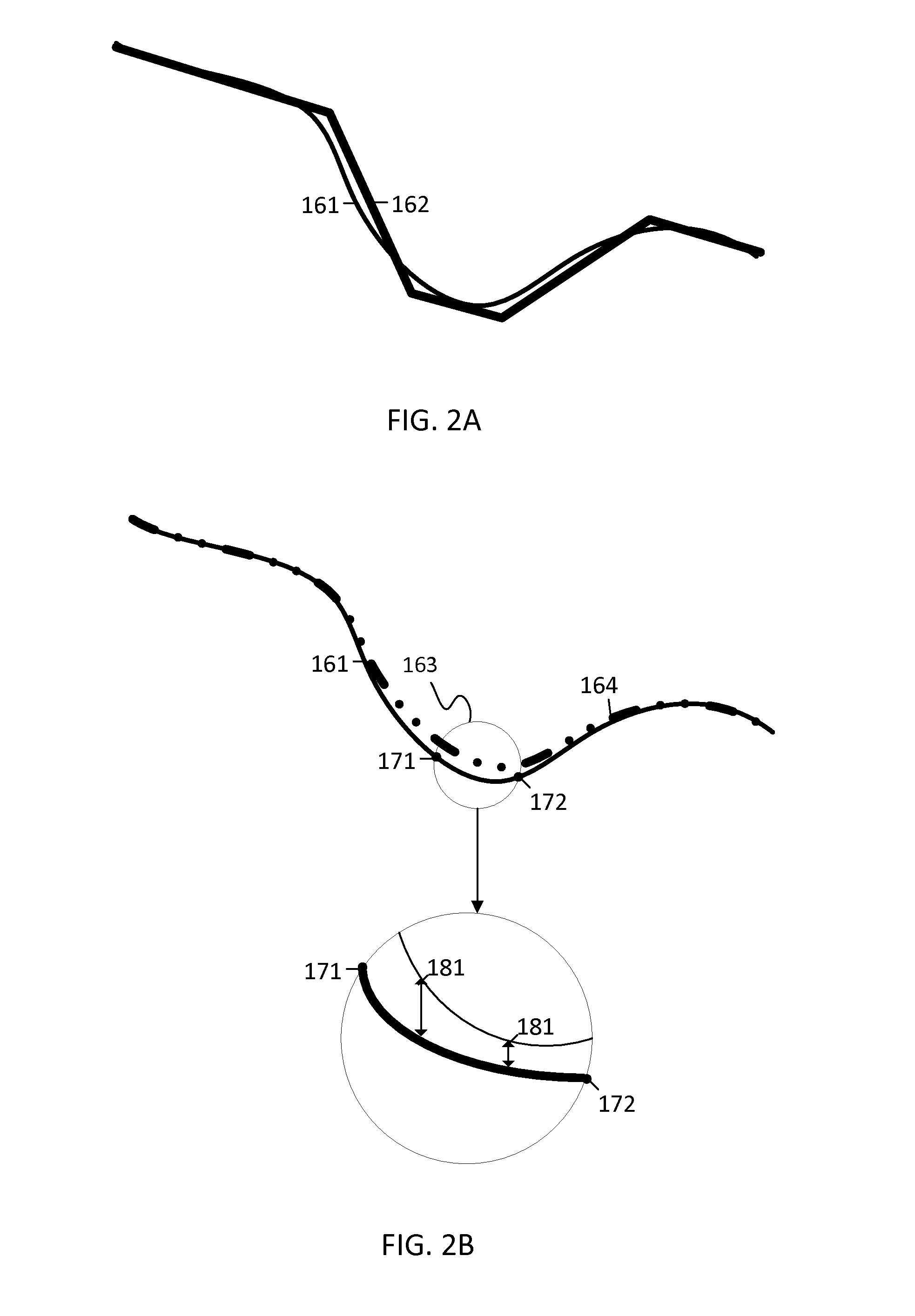Path curve confidence factors
a technology of confidence factors and path curves, applied in the direction of instruments, surveying and navigation, navigation instruments, etc., can solve the problems of inconsistent accuracy in the database, affecting the resulting path curve, and less effective driving assistance features
- Summary
- Abstract
- Description
- Claims
- Application Information
AI Technical Summary
Benefits of technology
Problems solved by technology
Method used
Image
Examples
Embodiment Construction
[0016]Path curves (e.g., polynomials or splines) for representing paths in a map database may have inaccuracies. The following embodiments assess the errors in path curves. The errors may be position deviations, curvature deviations, or heading deviations with respect to the actual position, curvature, or heading of the real world path as measured by sensors in a positioning device. In one example, the measured data is collected from one or more positioning devices and aggregated for analysis. In another example, the measured data is collected and analyzed while the positioning device travels along the path. The path may be a road, street, or walkway. The assessed errors may be described in confidence factors associated with various portions of the path curve. The confidence factors indicate the reliability of the path curve. A navigation device may place limits on certain navigation features so some navigational features are offered only when the current portion of the path curve m...
PUM
 Login to View More
Login to View More Abstract
Description
Claims
Application Information
 Login to View More
Login to View More - R&D
- Intellectual Property
- Life Sciences
- Materials
- Tech Scout
- Unparalleled Data Quality
- Higher Quality Content
- 60% Fewer Hallucinations
Browse by: Latest US Patents, China's latest patents, Technical Efficacy Thesaurus, Application Domain, Technology Topic, Popular Technical Reports.
© 2025 PatSnap. All rights reserved.Legal|Privacy policy|Modern Slavery Act Transparency Statement|Sitemap|About US| Contact US: help@patsnap.com



